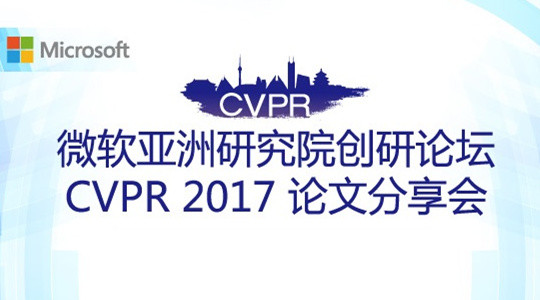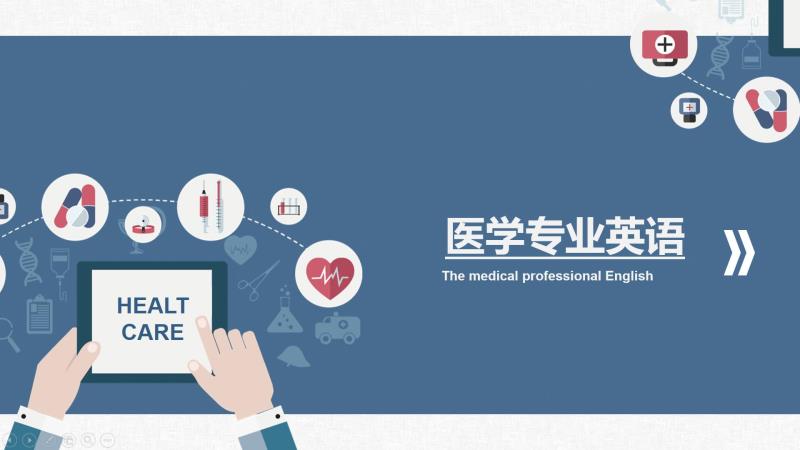
当前课程知识点:Methodology of Scientific Research > Lecture 5 Practical application of scientific research methods > Section 5.1 Initial Entry into the Research Group > 5.1.2 Consider Research Outline
返回《Methodology of Scientific Research》慕课在线视频课程列表
返回《Methodology of Scientific Research》慕课在线视频列表
我们接下来要说的就是梳理研究纲目
进行文献阅读
我们的目的是找出科研引领者的创新点及其实现的方法和技术
指定文献阅读只是给我们初步打下了一个基础
目前科学技术的发展是非常迅速的
研究人员也都在努力加快研究速度
希望能获得抢先的突破
因此文献的更新量是非常快的
而文献网络化也使得我们现在可以轻松获得大量的文献
但是仅仅拥有文献没有真正去消化他们,是并没有价值的
面对海量文献
我们需要一个策略
那就是用泛读加精读这样的一个策略
通过这样我们然后去对研究现状和发展趋势进行梳理和归纳
那么泛读的文献主要包括同方向、其他课题组博士论文和硕士论文综述类论文和期刊论文
在泛读的这里过程中我们需要学习
关键词的搜索和素养引用
被引用的文件
去扩展我们对文献的事业,从而使得我们不再局限于导师开始规定的范围
泛读的要求是了解其所用原理、结构、指标水平、解决的问题程度、当前研究的不足等等。
因此其核心主要就是摘要、引言、结论、原理图的定性描述
也就是说你不必拘泥于论文中的具体参数的演变规律优化或者公式推导
这样的话
使我们能快速的去丰富研究视野的
知道我们主要的创新都在哪几个方面
基本的技术现在都包括哪些
现有研究的指标范围都在哪些范围方面
这样我们才可以快速的掌握文献,获取大量的这样的一个阅读基础
与之相对我们还要进行精读
那么精读的范围就包括经典文献和高水平期刊的关键文献
尤其是里程碑式论文
那么在这些文件就跟我们泛读文件就不一样了
我们需要彻底明白
精读文件里面的每一部分
包括它的原理
它的公式推导过程
我们应该把这个公式我们自己重新推导一遍
包括它的参数选择
变化趋势
实验结果和分析以及最后的结论
那么精读不是说读一遍
通常我们都需要反复看上若干遍
真正把它吸收
成为我们扎实的研究基础
但是不管是精读还是泛读
勤做阅读笔记
将帮助我们理解和归纳整理
因为我们说了好记性不如烂笔头
所以做读书笔记是非常关键的
通过阅读了文件
我们下一步就可以来确定研究课题
因为我们已经知道了别人
那么现在我们就可以确定我们自己的方向
我们在这个地方就可以着手开展一个课题
那么选定课题
最好是要纳入我们导师在研课题的这样的范畴
这样你就可以具备比较完备的研究条件和研究基础
避免我们在还没有掌握科研方法的时候
就遇到困难过大的问题
那么课题的选择可以从4个方面来考虑
第1个是根据导师的目前在研项目选择
那么我们在这里面可以通过参与其中并承担具体的任务模块 具体来感受我们科研的一个实战过程
第2个选择是根据自己的兴趣来选择
从而主动去承担相应的任务模块
比如说你喜欢公式推导多一点
那么你就可以选择偏理论的任务模块,进行理论的分析,推导
如果你喜爱动手
跑现场多一点
我们可以选择偏工程的任务模块
因为科研本质上是一个需要投入度高的求索过程
如果你没有对所开展课题的热爱
你是很难以进行坚持并取得好的成果
那么选择的时候
我们还需要根据自己的能力和优势进行选择
这样我们才能在激烈的科研竞争中脱颖而出
比如有的同学对电路设计它有很好的基础,那么我们就可以承担课题的嵌入式系统,电路硬件的开发任务
有的同学它的软件编程能力强
我们就可以承担课题的测控软件开发
我们也要注意进行尝试
加入某一个课题组
如果发现不合适
我们再和导师沟通 及时地进行方向调整
既完成我们当前课题的工作
也为我们将来更好的选择方向奠定基础
比如我们进入到研究生阶段
我们可能就不太需要调整而导致匆忙去换方向
引起科研时间不足等问题
-Section 1.1 Basic Concepts of Scientific Research
--1.1.1 Basic Concepts of Research
-Section 1.2 General Procedure of Scientific Research
--1.2.3 Process of Natural Science
--1.2.4 Process of Social Science
--1.2.5 Process of Technologial Science
-Section 1.3 How to Prepare for Scientific Research
--1.3.1 Motivation of Research
-Test-Lecture #1
-Section 2.1 Types and Sources of Research Project
-Section 2.2 Principles and Methods of Topic Selection
--2.2.1 Principle of Topic Selection
--2.2.2 Methods of Topic Selection
--2.2.3 Procedure and Strategy of Topic Selection
-Section 2.3 Information Collection of Project
--2.3.1 Type, Collection and Search of Information
-Test-Lecture #2
-Section 3.1 Typical Research Methods
--3.1.1 Level of Research Method
--3.1.2 Concept of Research Method
--3.1.3 Typical Research Methods
-Section 3.2 Typical Thinking Modes
--3.2.1 Thinking and its Characteristics
--3.2.2 General Innovative Thinking
--3.2.3 Typical Thinking Modes
-Section 3.3 Analysis of Research Cases
--3.3.1 Question Description and Concept
--3.3.2 Three-Level Theory of Problem
--3.3.3 Train of Question Consciousness
-Test-Lecture #3
-Section 4.1 Research-oriented Scientific Design
--4.1.1 General Scientific Design
--4.1.3 Example of Research Design
--4.1.4 Other kinds of Research Design
-Section 4.2 Experimental Scientific Research Design
--4.2.4 Example of Experimental Design
-Section 4.3 Application-oriented Scientific Design
--4.3.1 Basic Concepts and Significance
--4.3.3 Example of Applied Design
--4.3.4 Train of Research Skills
-Test-Lecture #4
-Section 5.1 Initial Entry into the Research Group
--5.1.2 Consider Research Outline
-Section 5.2 Analysis of Scientific Research Cases
--5.2.1 Example of Correct Topic Selection
--5.2.2 Example of Team Cooperation
--5.2.3 Test of Non-invasive PDM
-Section 5.3 Research-based Learning and Research
--5.3.1 Overview of Research Learning
--5.3.2 Research-based Learning
--5.3.3 Research Train for Undergraduates
-Test-Lecture #5
-Section 6.1 Scientific Research Strategy and Tactics
--6.1.1 Strategy in Research Work
--6.1.2 Tactics in Research Work
--6.1.3 Research Group and Management
-Section 6.2 Scientific Research Tactful Operation
--6.2.3 Typical Research Planning
-Section 6.3 Discrimination of Research Obstruction
--6.3.2 Origin of Research Obstruction
--6.3.3 Case of Research Obstruction
--6.3.4 Strategy to Remove Obstruction
-Test-Lecture #6
-Section 7.1 Research Papers and Writing
--7.1.2 Writing Research Paper
-Section 7.2 Rules for Submission and Publication
--7.2.1 Preparing for Contribution
--7.2.2 Process of Publication
--7.2.3 Strategy of Contribution
-Section 7.3 Examples and Analysis of Paper
--7.3.1 Basic Structure of Paper
--7.3.3 Introduction, Main Content and Conclusion
-Test-Lecture #7
-Section 8.1 Introduction of Invention and Creation
--8.1.1 Generality of Invention
--8.1.2 Principle of Invention
--8.1.3 Risk and Protection of Invention
-Section 8.2 Patent Types and Applications
--8.2.1 Characteristics and Types of Patent
--8.2.3 Process of Applying Patent
-Section 8.3 Patent Examples and Analysis
--8.3.1 Example of Invention Patent
--8.3.2 Example of Utility Model Patent
--8.3.3 Example of Design Patent
-Test-Lecture #8
-Section 9.1 Characteristics, Types and Titles of Academic Conferences
--9.1.1 Characteristisc of Academic Conference
--9.1.2 Types of Academic Conference
--9.1.3 Title of Academic Conference
-Section 9.2 Basic Elements and Report Types of Academic Conferences
--9.2.1 Basic Elements of Conference
--9.2.2 Types of Conference Report
-Section 9.3 Main Points, Syntax and Summary of Academic Reports
--9.3.1 Writing and Accepting Conference Paper
--9.3.2 Exercise before Reporting
-Test-Lecture #9
-Section 10.1 Character and Type of Researcher
--10.1.1 Basic Moral of Researcher
--10.1.2 Moral Outlook of Researcher
--10.1.3 Talent Type and Innovative Quality
-Section 10.2 Research Ethics and Academic Norms
--10.2.1 Generality of Research Morality
--10.2.3 Monitoring Measure of Research
-Section 10.3 Research Relationship and Incentive Mechanism
--10.3.1 Generality of Research Relation
--10.3.2 Typical Research Relation
--10.3.3 Research Incentive System
-Test-Lecture #10



